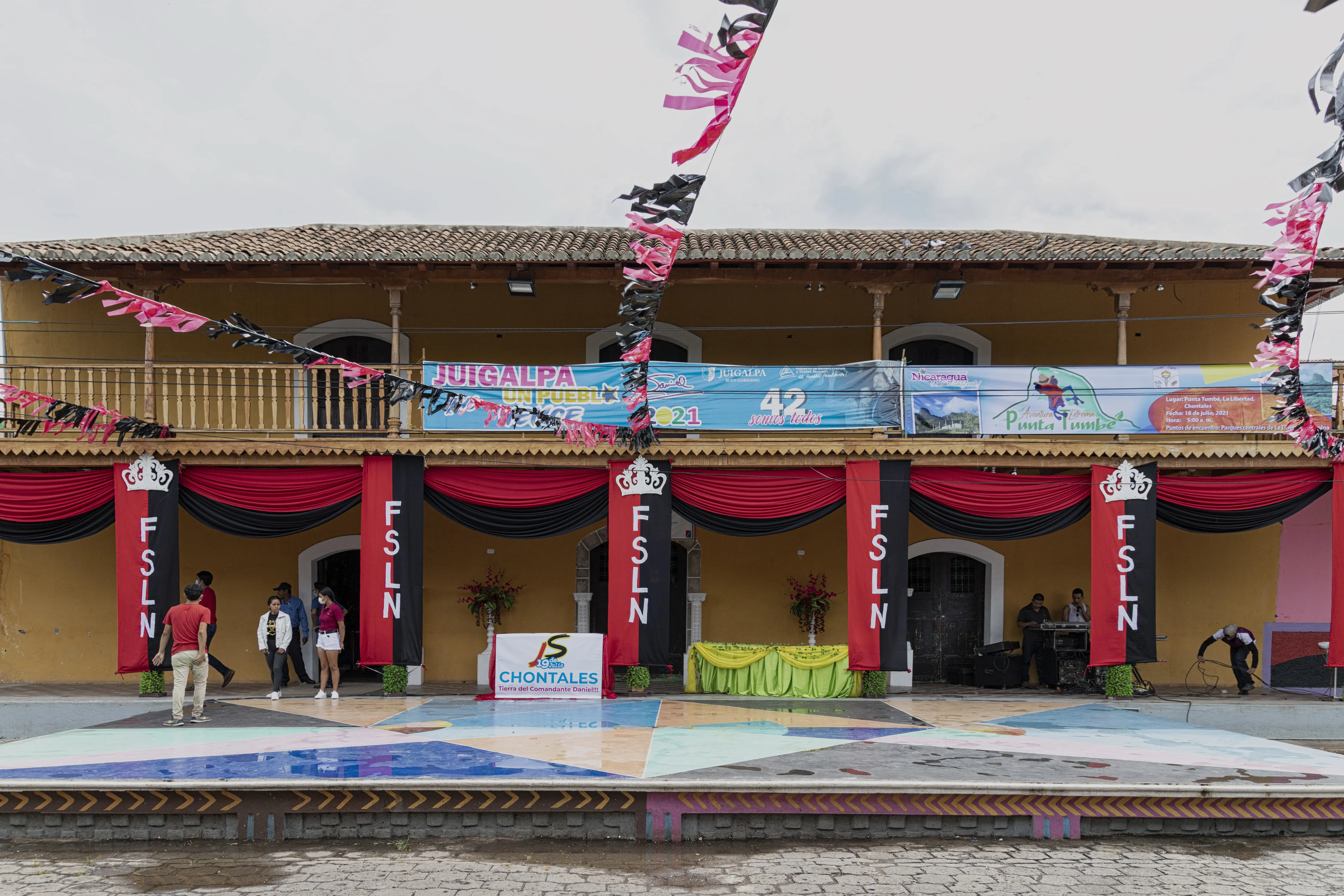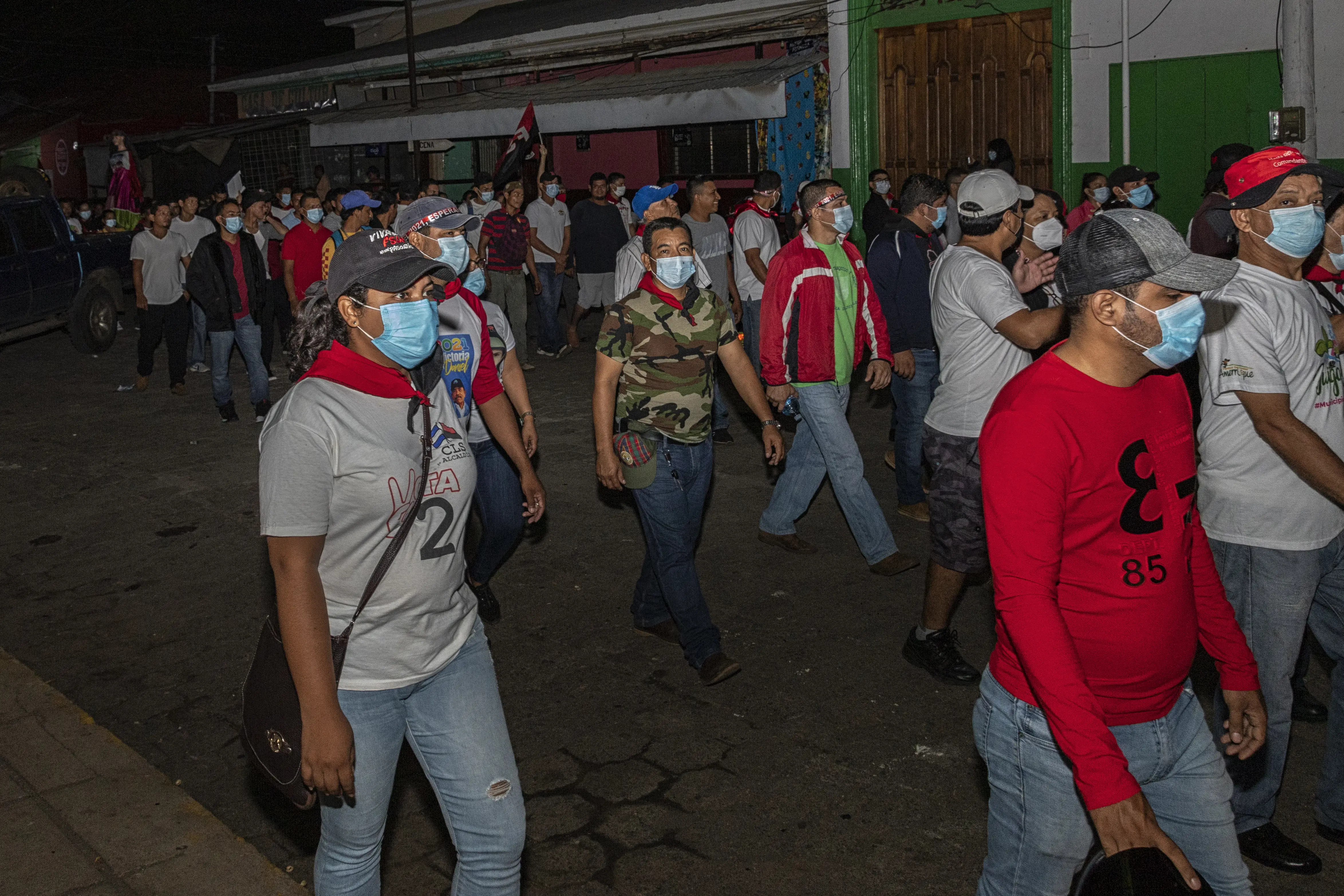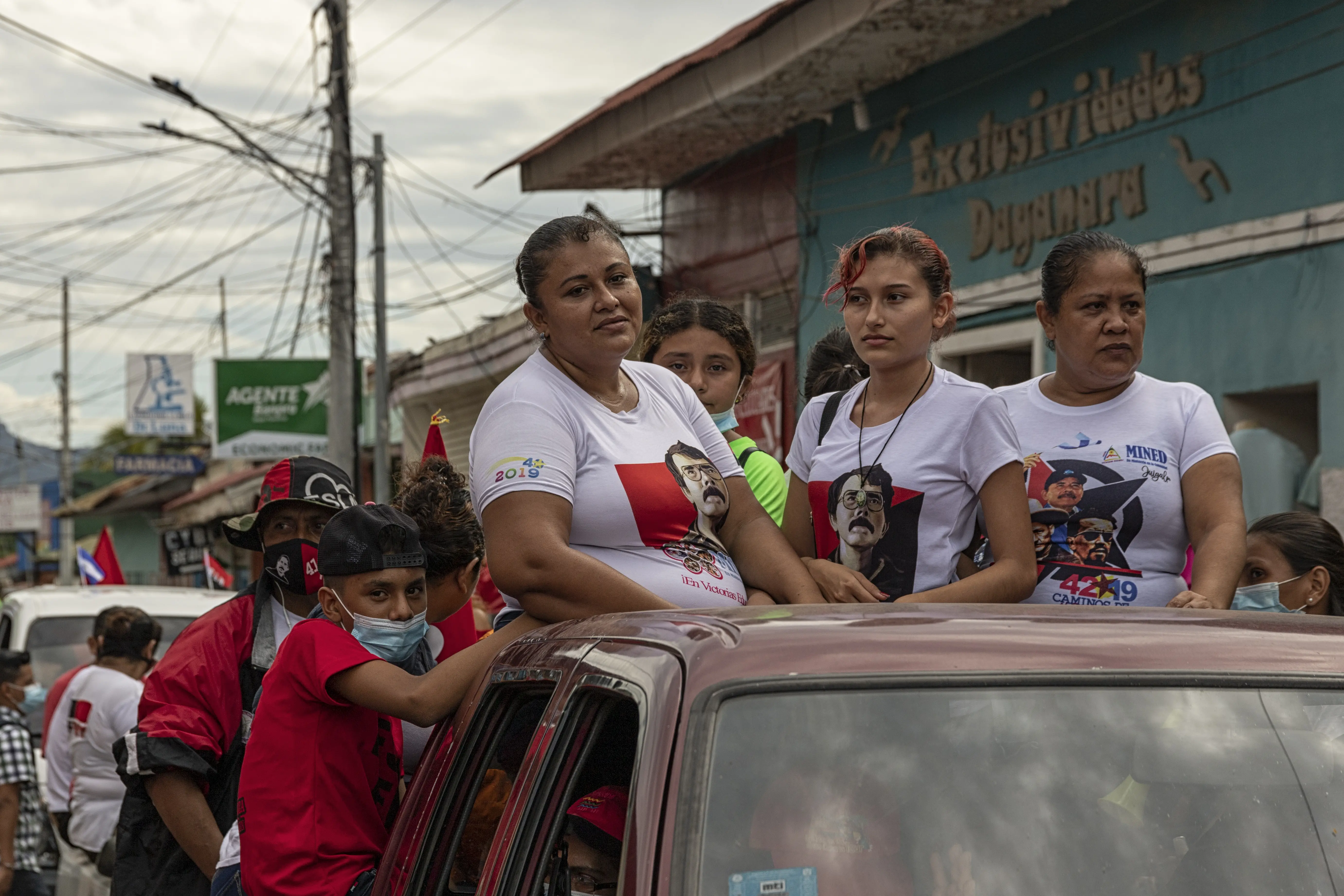The Culture Palace, a recently renovated Spanish colonial styled building, sits across Parque Central in Juigalpa, Chontales, Nicaragua. Every day, as sunset approaches, the crows swarm and stir the trees that flank the park. Their piercing caw barely dampens the street vendors peddling cellphone accessories; the bullhorns announcing unbelievable discounts; the old men laughing at the northeast corner, a spot some call purgatory.
It has been over 42 years since I was jailed in what’s now the Culture Palace—back then, a militarized police station. My rap sheet stated, in its sole entry, “possession of illegal literature.” I was 17 and had been captured in early 1979 after sneaking into the city from my clandestine assignment in the Chontales mountains. In July 1979, two months after my release, an insurgency spearheaded by the Sandinista Front for National Liberation (FSLN, in Spanish) toppled the USA-sponsored Somoza dynasty.
The Sandinistas—led by Daniel Ortega—were to be defeated at the ballots in 1990 by Violeta Barrios Chamorro and her coalition after a decade of civil war partially bankrolled by the U.S. The conflict had worn down the Nicaraguan people’s willingness to endow a socialist project hollowed by death—more than 40,000 Nicaraguans killed—and hopelessness.

Thirty years later, I’ve returned to Nicaragua for the first time since I left to the U.S. in 1991. Ortega has been back in power since 2007—now with his wife Rosario Murillo as vice president—for what he has termed “the second stage of the revolution.”
I’ve returned to Juigalpa, the site of my youthful indiscretions, where aged friends seem to have sleepwalked for decades into an amusement park of derelict dreams. I am awash in a feeling of displacement that permeates my daily strolls along narrow sidewalks brimful with ogling merchants.
It took me a beat to recognize Mateo, now in his mid-60s, sitting on a bench across from the cathedral at Parque Central. He still carries that weary soul demeanor. “I was told you were in town. Welcome back to the slumbering cow!” he says with a slanted smile, referencing a celebrated local poet who declared Chontales a slumbering cow not even barking dogs could startle.
We sit for a talk that falters under the weight of years gone by. Mateo seems keenly watchful of his surroundings, then I recall he has always been like this, since the days in the 1980s when we drank cheap booze at his mother’s home, while she sat on the porch scanning the passersby for traces of guilt or shame.
“Things are tough,” he says. “I am on a fixed income that doesn’t fix anything. My body’s breaking down. Nearly died a few years ago.” And still, I find him more present than others I’ve met, who appeared corralled into barren spaces of the mind. “I gave up drinking; I gave up coke, too,” he casually shares. I didn’t know he did coke. I don’t think I met, back in the day, anyone who did coke. Maybe, maybe, I just didn’t get invited.
Mateo goes into vagaries when talking about the April 2018 uprising: “Things got hairy. But you know me; I am low-key.” Yes, always low-key. He worked for the Ministry of Interior’s censorship department during the war-torn 1980s and speaks of it with a baffling sense of continuity: no before and after, just a continuum of human deeds and misdeeds.
The April 2018 uprising—a watershed moment in recent Nicaraguan history—shook the Sandinista regime to its foundation and forced its hand into a direct confrontation it had largely avoided for over a decade, putting into question its main selling point of legitimacy through stability.
Sociopolitical unrest had been mounting for a while, mostly since Ortega announced his pharaonic interoceanic canal in 2013, an enterprise intended to bring in around $40 billion in Chinese private investment, while signing away the country’s sovereignty. The project would’ve displaced many farming families, and arguably caused irreparable environmental damage.

Nearly 350 people were killed in the uprising, including 22 police officers, and more than 120,000 people lost their jobs—many more saw their incomes severely reduced—while opposition figures wasted political capital vying for prominence and for their share of U.S. funneled monies. Instead of solid resistance grassroots work, Nicaraguans saw closed room meetings, international travels, press room grandstanding, and groveling subservience to the U.S. State Department’s reclaiming of what it considers its imperial backyard.
Mateo speaks of the revolution’s maladies with surgical precision, cutting into its body without realizing it’s an autopsy. It is what it is because it’s the way it has been. A litany of names of our dearly departed stream along with updates on the ones still among us: “He married a wealthy woman and now proofreads her poetry. He has gotten fat and mean. He gets $800 a month from Rosario Murillo; she paid for his recent stay in a fancy hospital.”
Mateo delivers a low pitch version of Nicaraguan staccato as he brings me up to date on Laureano, a close friend of his and an acquaintance of mine, who in the 1980s was considered one of our most promising poets. For some reason, we keep returning to Laureano, as if his decline epitomizes our loss of innocence and what’s wrong with the country. Mateo is reluctant to talk about the upcoming elections.
Just a few weeks away from the November 2021 general elections, Nicaragua has entered a new stage of its conflicted history, with the chips stacked at one end of the table to favor the new crème de la crème. And at the other end, the Nicaraguan people who toil every day to eke a living, while drowning in a propaganda haze that eerily hearkens back to the era of El General and his “Somoza forever!” devoted crowds. The recent wave of arrests—more than 30 prominent Ortega opponents jailed since July 2021—casts a deep shadow over the electoral process and its chances of correcting the authoritarian route taken by the Ortega-Murillo bicephalous regime, leading the country into a sharper turn away from a promised democracy of encompassing inclusion and of deep deliberation.
The Sandinistas’ mass media, with several TV channels in the hands of the Ortega-Murillo family, dispenses daily monotonic and sycophantic programming echoed by propaganda signage on buses, at parks, and on governmental buildings. The “trees of life”—garish metal structures inspired by Gustav Klimt’s work—loom over Managua’s plazas and streets like oversized ideograms of a pernicious visual grammar, at a reported cost of $1 million a year to electrify. A disconcerting mixture of festivity and dread pervades the country.
While visiting our friend Walmaro, Mateo shares that a renowned local journalist and essayist has gone into hiding because of his association with Carlos Fernando Chamorro, the most salient Nicaraguan opposition journalist, currently in exile. After a while, we all begrudge journalism becoming a crude side hustle for many on both sides of the divide. “We are in a hatred echo chamber,” says Walmaro. “The government speaks of love and peace, but they are the ones who poisoned the air.”
At Juigalpa’s Parque Central, the crows are being ambushed by two columns of 9-foot stacked loudspeakers blasting throwback revolutionary music in preparation for the July 19 anniversary speech by El Comandante Daniel Ortega Saavedra, to be projected on a screen with the Culture Palace in the background. Because of COVID-19, there won’t be a central rally in Managua as it has been customary; instead, there will be local events under the slogan “Cada casa una plaza,” that is, each home a plaza.

It’s still early and the DJ has taken a break; there is a relatively quiet spot opposite the Culture Palace, at the coffee shop where Mateo can often be found. He speaks of the nouveau riche that emerged from the misappropriations by the exiting Sandinistas in 1990. All that is happening now can be traced to those days of pillage, and to the years that followed with incoming administrations feeding the graft culture.
“It’s rotten to the core, and they all know it,” he says. There are moments Mateo reawakens his will to deeply question and he briefly shines, to then fade toward a dream long lost down the broken roads of the republic.
I am there when El Comandante starts his speech. I can’t hear the crows anymore. I am enthralled by the restrained faces awaiting prophecy and deliverance. Some believe, I am sure, others are here for the t-shirt. El Comandante starts his speech and I feel myself the loneliest soul in this wreck of a purgatory. His face is that of a man exiled from what was once a luminous vision, now buried under his walled-in compound in the El Carmen neighborhood, in a drowsy Managua unconcerned by barking dogs.
A renewed Nicaragua is not yet in sight. The April 2018 uprising—a self-proclaimed peaceful civic exercise—testifies to the Nicaraguan people’s will to freedom. Unfortunately, the shadow of political violence and toxic narrow-mindedness have distorted the higher claims of the cause as they commingled with the lower demands of rage when confronting autocracy’s goons and guns.
A true non-violent project starts by confronting all forms of violence within its own ranks. In my view, the Nicaraguan dissidents have yet to properly face their own demons so, in the words of Salvador Allende, “the great avenues will open again where free men will walk to build a better society.”









